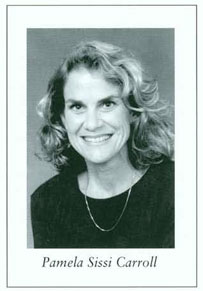ALAN v29n2 - A Note from the Editor
A Note from the Editor

Remember when you were a young adolescent—when nothing you wore or were, not even your own nose or arms, your own sense of humor or system of values—seemed to fit? Early adolescence is a tricky time for teachers, too; we want to intervene without interfering with students' intellectual, psychosocial, emotional development, but often we are unsure of how far to reach toward them, how much to reveal to them, how forcefully to nudge them.
This issue of The ALAN Review focuses a majority of its attention on books, authors, and suggestions for lessons that are appropriate for readers in the middle grades. One emphasis is on books related to the Holocaust, since the Holocaust is a required curricular feature in middle schools in many states. Canadian YA author Carol Matas, whose subject is the Holocaust, discusses her books in an interview with Ed Sullivan, who further suggests rationales and methods for incorporating Matas' books into classrooms and media collections. Holli Levitsky, currently a Distinguished Fulbright Scholar of American Literature at the University of Warsaw, Poland, continues the look at Holocaust literature by raising provocative questions about the ways we use the most popular of all YA Holocaust texts, Anne Frank's Diary of Young Girl . Other articles that discuss books popular among readers in the middle grades include Lois L. Warner's look at the magic of Francesca Lia Block's fiction, and Laura Apol's consideration of re-appearing fathers in the fiction of Virginia Hamilton and Walter Dean Myers. With section editor Jeff Kaplan's leadership, the Clip and File Book Reviews also spotlight many works of literature that may be particularly appealing to readers in the middle grades, including Strike Two (Amy Goldman Koss), The Beguilers (Kate Thompson), The Babbs Switch Story (Darleen Bailey Beard), Benno's Bear (N.F. Zucker), Uncle Daddy (Ralph Fletcher), Daniel's Walk (Michael Spooner), Anna Casey's Place in the World (Adrian Fogelin), and Fair Weather (Richard Peck).
Since collaboration is a characteristic of middle school programs, it is appropriate that there are several examples of collaborative efforts within the pages of this issue of the journal. Apol's attention to reappearing fathers in YA novels is balanced with attention to motherless daughters in an article by middle school administrator James Lovelace and middle school teacher Laura H. Smith. Marsha M. Sprague and Lori Risher report together on their project in which middle school students read and responded to fantasy literature. Lauren Groot and Martha Story consider together the reasons that The Outsiders still holds such appeal for middle school readers. Terry Martin and Tracey Brown provide us with a rich collection of ideas for teaching Sook Nyul Choi's Year of Impossible Goodbyes .
Within the pages of this issue, we also offer suggestions that may help teachers find ways to (further) incorporate YA literature into their curricula. M. Linda Broughton shows us, in the Middle School Connection column, several reliable, useful, books to add to our professional collections. Pat Daniel provides a method for introducing prospective and practicing teachers to YA books by treating the characters as if they are friends. Greg Hamilton presents an overview of the history of thought about adolescence, and helps us firm up our rationale for teaching YA literature. Ted Hipple, longtime spokesperson for YAL, provides us with further rationale for treating the genre with respect by presenting an annotated list of ninety-nine outstanding articles about young adult literature.
Young adolescents strike me as humans who are eager to learn, but who are unsure, often, about how to reveal their interest and enthusiasm. Fortunately, those of us who know good books that are likely to appeal to middle school students don't have to wait for students to come to us; we are able to extend a book, an author, an idea to them, and in that gesture, we invite them to talk, think, and continue to grow.